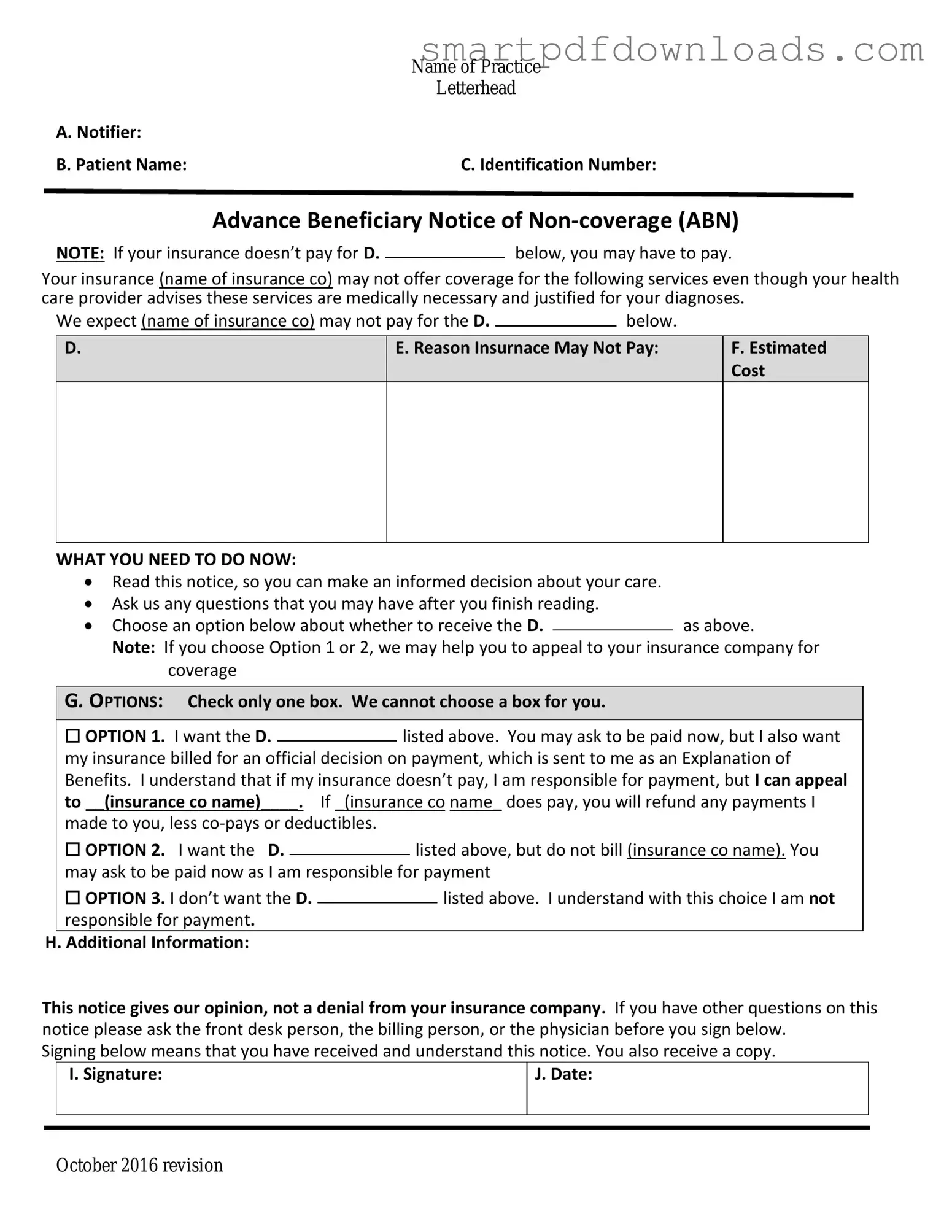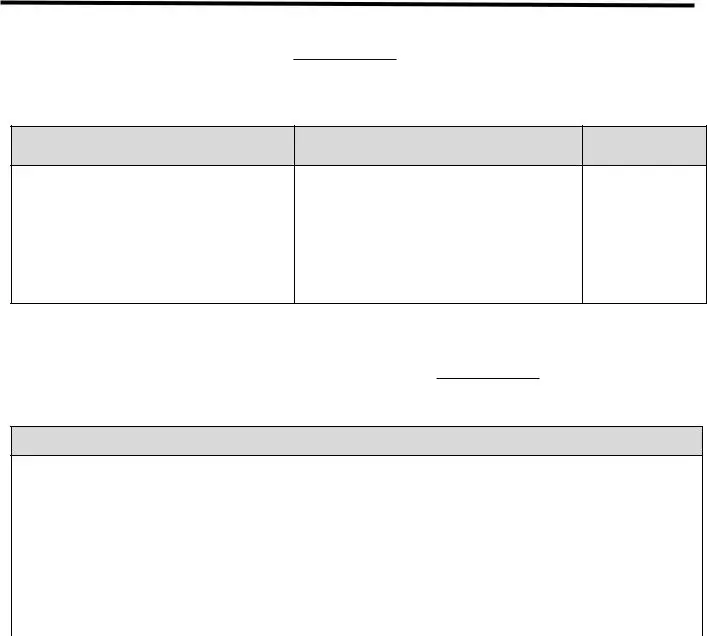|
Name of Practice |
|
Letterhead |
A. Notifier: |
|
B. Patient Name: |
C. Identification Number: |
Advance Beneficiary Notice of Non-coverage (ABN)
NOTE: If your insurance doesn’t pay for D.below, you may have to pay.
Your insurance (name of insurance co) may not offer coverage for the following services even though your health care provider advises these services are medically necessary and justified for your diagnoses.
We expect (name of insurance co) may not pay for the D. |
|
below. |
|
E. Reason Insurnace May Not Pay:
WHAT YOU NEED TO DO NOW:
Read this notice, so you can make an informed decision about your care.
Ask us any questions that you may have after you finish reading.
Choose an option below about whether to receive the D.as above.
Note: If you choose Option 1 or 2, we may help you to appeal to your insurance company for coverage
G. OPTIONS: Check only one box. We cannot choose a box for you.
|
|
|
|
|
|
|
|
|
☐ OPTION 1. I want the D. |
|
listed above. You may ask to be paid now, but I also want |
|
|
|
my insurance billed for an official decision on payment, which is sent to me as an Explanation of |
|
Benefits. I understand that if my insurance doesn’t pay, I am responsible for payment, but I can appeal |
|
to __(insurance co name)____. If _(insurance co name_ does pay, you will refund any payments I |
|
made to you, less co-pays or deductibles. |
|
|
|
|
☐ OPTION 2. I want the D. |
|
|
listed above, but do not bill (insurance co name). You |
|
|
|
|
may ask to be paid now as I am responsible for payment |
|
☐ OPTION 3. I don’t want the D. |
|
|
|
listed above. I understand with this choice I am not |
|
|
|
|
|
responsible for payment. |
|
|
|
H. Additional Information: |
|
|
|
This notice gives our opinion, not a denial from your insurance company. If you have other questions on this notice please ask the front desk person, the billing person, or the physician before you sign below.
Signing below means that you have received and understand this notice. You also receive a copy.

